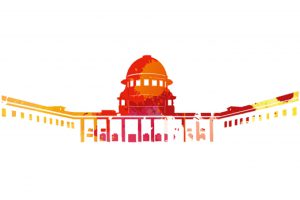Supreme Court: The bench of Dr. DY Chandrachud and Ajay Rastogi, JJ Section 37 of the Architects Act 1972 does not prohibit individuals not registered under the Architects Act from undertaking the practice of architecture and its cognate activities.
The Court was hearing an appeal against the Allahabad High Court verdict where it was held that Section 37 only prohibits unregistered individuals from using the title “architect”. As a necessary adjunct of this reasoning, the High Court held that the Promotion Policy 2005, which allowed for individuals not holding a degree in architecture being appointed to the Class II post of Associate Architect, did not contravene Section 37 of the Architects Act in so far as they would be carrying out the activities of an architect. It said,
“mere nomenclature of the particular post will not in any way be said to violate the provisions of the Architects Act 1971.”
However, when the matter reached the Supreme Court, it noticed that where a plain reading of the text of the statute leads to an absurd or unreasonable meaning, the text of the statute must be construed in light of the object and purpose with which the legislature enacted the statute as a whole. It said,
“The Statement of Objects and Reasons of the Architects Act makes it evident that the legislature was undoubtedly concerned with the risk of unqualified persons undertaking the construction of buildings leading to costly and dangerous buildings. In guarding against this risk, the legislature first set out a minimum standard of statutorily recognised qualifications to be met before an individual is designated as an architect under the Architects Act.”
Architecture undoubtedly constitutes a highly specialised profession requiring the possession of minimum educational qualifications. However, architects are by and large engaged by means of a contract for services. In other words, architects provide a set of specialised services towards the larger goal of construction. Architects are not embarking on construction independently of other actors. By virtue of the Architects Act, anybody engaging the services of an individual calling themselves an “Architect” is assured that such an individual possesses statutorily recognised educational qualifications and is competent to complete the task at hand.
The Court further explained that the legislature chose to define an “architect” as an individual registered under the Architects Act and not as an individual practicing architecture or any cognate activities. Thus, the legislature limited the regulatory regime created by the Architects Act to the first class of individuals.
“In protecting the public from the risk of the second class, untrained individuals, the legislature had two options: first it could bar this second class of individuals from engaging in the profession altogether (as it had done with physicians and advocates); or alternatively it could prevent this second class of individuals from calling themselves “Architects”.”
The Court, hence, held that the Statement of Objects and Reasons make it clear that the legislature chose the second option and in fact went to great lengths to clarify that choice. The legislature stated that with the passing of the legislation, it shall be unlawful for an unregistered individual to designate himself as an “architect”.
[Council of Architecture v. Mukesh Goyal, 2020 SCC OnLine SC 329, decided on 17.03.2020]

